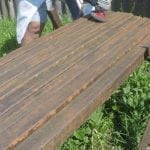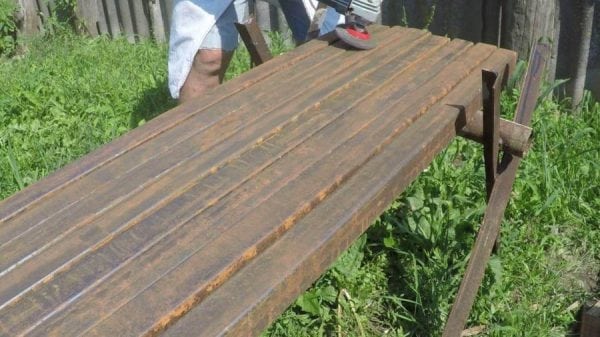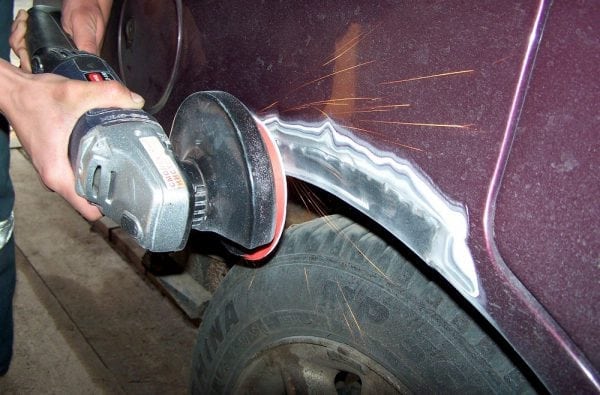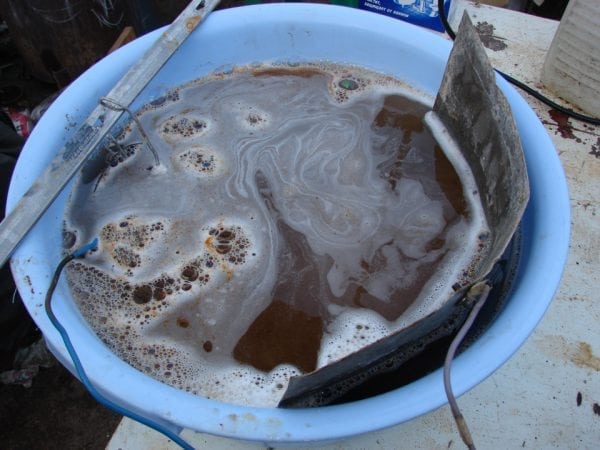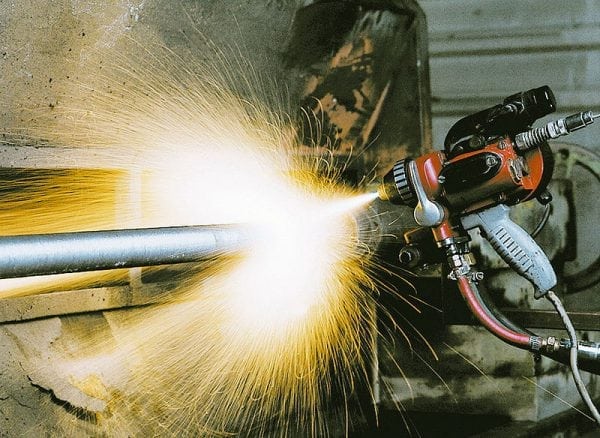The appearance of rust on metal surfaces is a bad sign. And the point here is not only in an unattractive form. Any corrosion over time leads to partial or complete destruction of metal products, if timely measures are not taken to eliminate this defect. Consider the better to treat rust and how to prevent its appearance in the future, before applying the paint.
The main types of corrosion
To determine what methods should be used for rust treatment, first of all, you need to understand what types of corrosion exist and how they manifest themselves.
Rust is classified according to several parameters regarding the degree of damage:
- Shallow corrosion spots that spread across the width of the metal surface, and not in depth.
- Small dots that penetrate deeply into a metal product.
- Through corrosive metal damage.
- Corrosion-resistant film type, in which rust occurs directly under the coating - paint layers usually swell in such areas. Such phenomena must be paid attention to to prevent the destruction of a metal product.
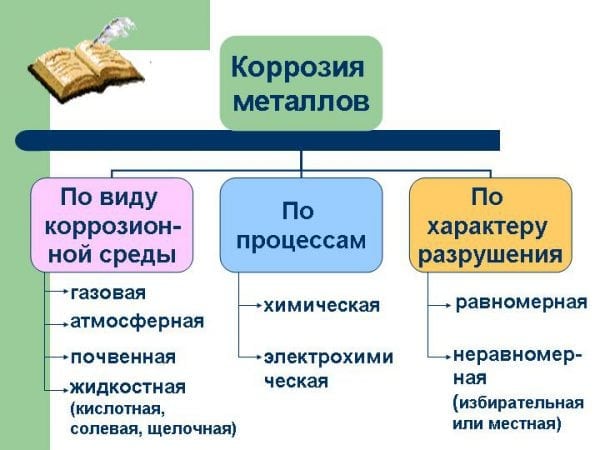
Processing methods
Starting to paint metal products with signs of corrosion, it is imperative to properly handle the rust. For these purposes, there are three different ways:
- mechanical;
- chemical;
- thermal.
In cases where it is necessary to carry out rust treatment on an industrial scale, special converters or apparatuses are often used, designed for shot blasting or sandblasting. Consider what properties each of the types has.
to contents ↑Mechanical method
Leading in the ranking of efficiency and reliability of the mechanical method of cleaning metal products from rust. It can be performed using both manual and mechanized tools.
Before painting metal products, corrosion manifestations can be removed using equipment such as:
- sandblasting installation;
- grinding wheels;
- wire brushes;
- sandblasting apparatus.
During sandblasting, the damaged surface of a metal product is exposed to a jet of sand, which is supplied under high pressure. Waterblasting (or, in other words, waterjet) is carried out in much the same way, except that in this case sand or other abrasive material is mixed with water.
Waterjet Corrosion Removal is a method suitable exclusively for industrial applications. It can be carried out under various degrees of pressure: low, high and ultrahigh.
If you need to clean small metal areas before applying paint, just use simple wire brushes. Also, using these hand tools, primary metalworking is performed. True, this option is not without certain drawbacks: during operation, a large amount of dust is generated, and the result is far from ideal, even if you do everything right.
Special grinding wheels give better results compared to brushes. They are usually used in cases where it is required to efficiently process metal surfaces of small or medium size. For best effect, high quality abrasive wheels should be used before applying the paint. These products differ in form and in type of abrasive.
The main types of abrasive wheels are:
- with a direct profile;
- with ring profile;
- conical;
- cup.
The most durable and high-quality abrasive materials used in the manufacture of grinding wheels include diamond, electrocorundum, silicon carbide, elbor, bakelite, vulcanite, as well as some others. When choosing suitable abrasive wheels to remove rust before painting metal, it is important to pay attention to several parameters:
- The hardness of the circle must exceed the hardness of the surface being treated.
- Grain to remove rust should be moderately large.
- The diameter of the circle should be selected in accordance with the area of the processed metal surface.
These products are also suitable for efficient Removing obsolete paint from metal and other paints and varnishes.
to contents ↑Chemical way
Speaking about the chemical method of rust treatment, it should be noted special converters, which are very widely used at present.
Rust converters may differ in the form of release and the method of application to the metal surface, however, all of them lead to a similar result. They are often used before painting metal surfaces.
Modern industry offers a rust converter in three main options:
- liquid;
- gel-like agent;
- spray can.
The principle of operation of the converter is as follows: phosphoric acid, which is the main active component of the product, begins to actively contact the oxidized metal surface, resulting in a microscopic film that is absolutely impermeable to oxygen. Therefore, without the possibility of access to the oxidizing agent, the chemical reaction stops and the metal product does not deteriorate further.
When using the inverter, it is necessary to observe safety measures and clearly follow the attached instructions.
A high-quality and efficient converter can be manufactured independently. For these purposes, it is recommended to use water, as well as citric and oxalic acids, mixed together in equal proportions. Another important ingredient of such a converter is soda - 1 tsp. per 1 liter of water. For processing, you need to moisten a soft cloth in the resulting solution and intensively wipe the affected metal area with it.
to contents ↑Thermal method
In addition to special converters and abrasive wheels, in order to remove signs of corrosion before applying paint to metal objects, the thermal method is often used. It consists in the use of a special oxygen-acetylene burner, with the help of which all the affected metal surface prepared for cleaning is intensively processed. As a result of this procedure, mill scale and old paint layers are almost completely removed.
In order to prevent, it is recommended to regularly inspect metal products, and to use quality products with anti-corrosion properties for care.
Choose the most suitable rust removal method depending on the area and nature of the damage. For best results, purchase only the most reliable materials and products for this purpose.

